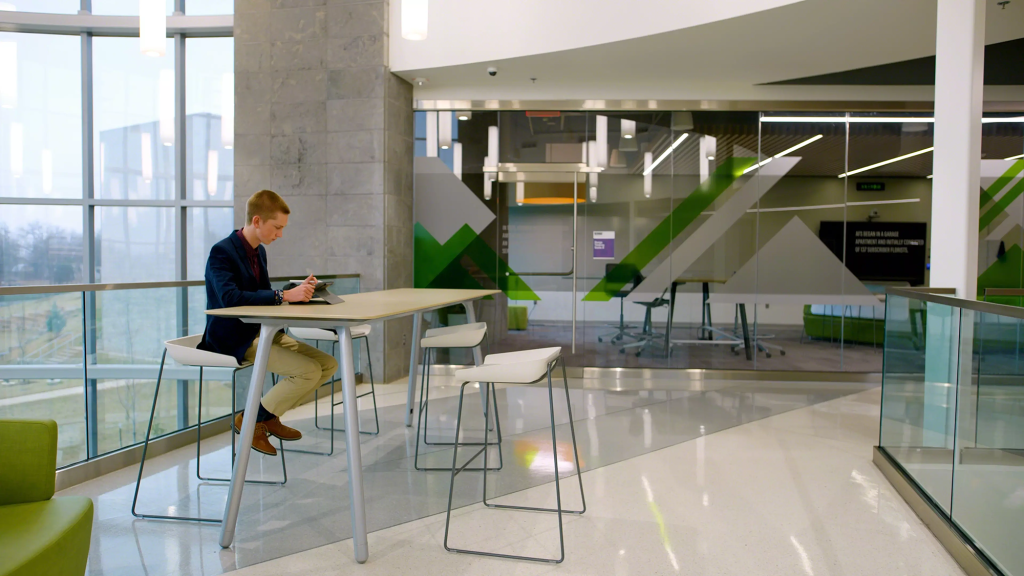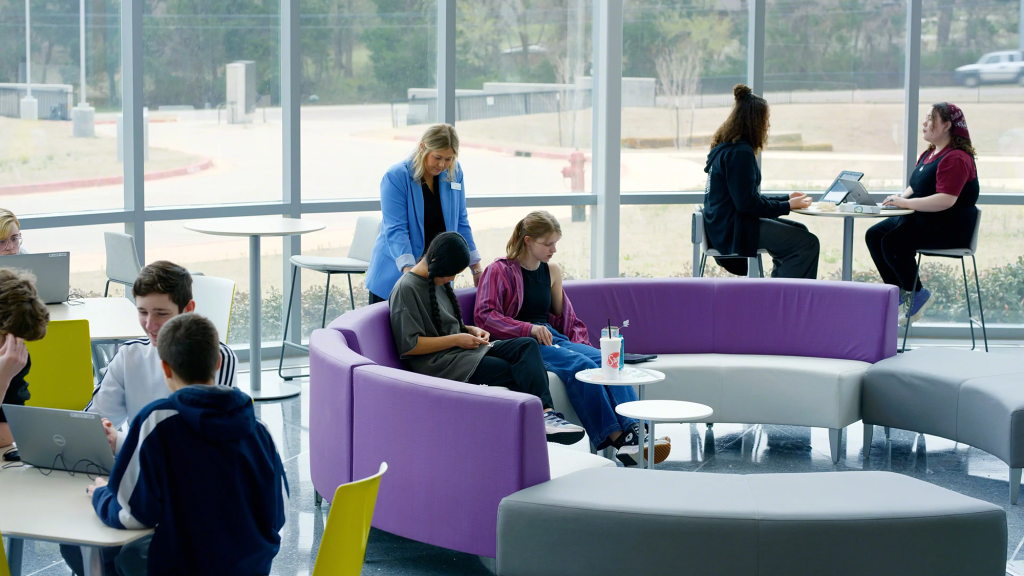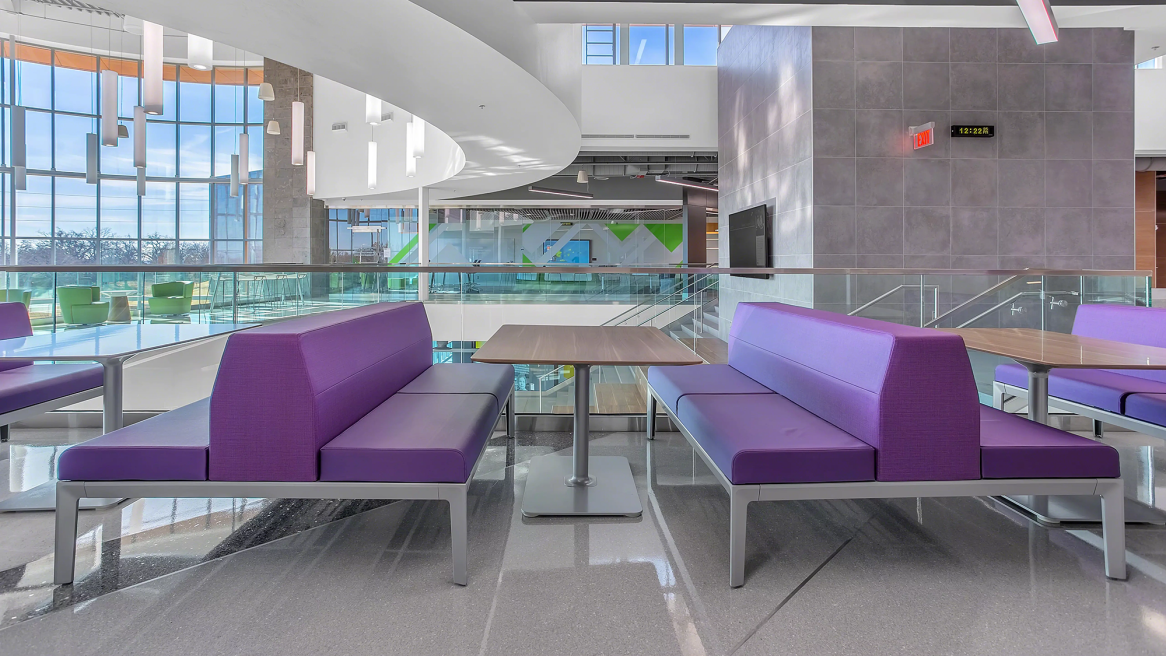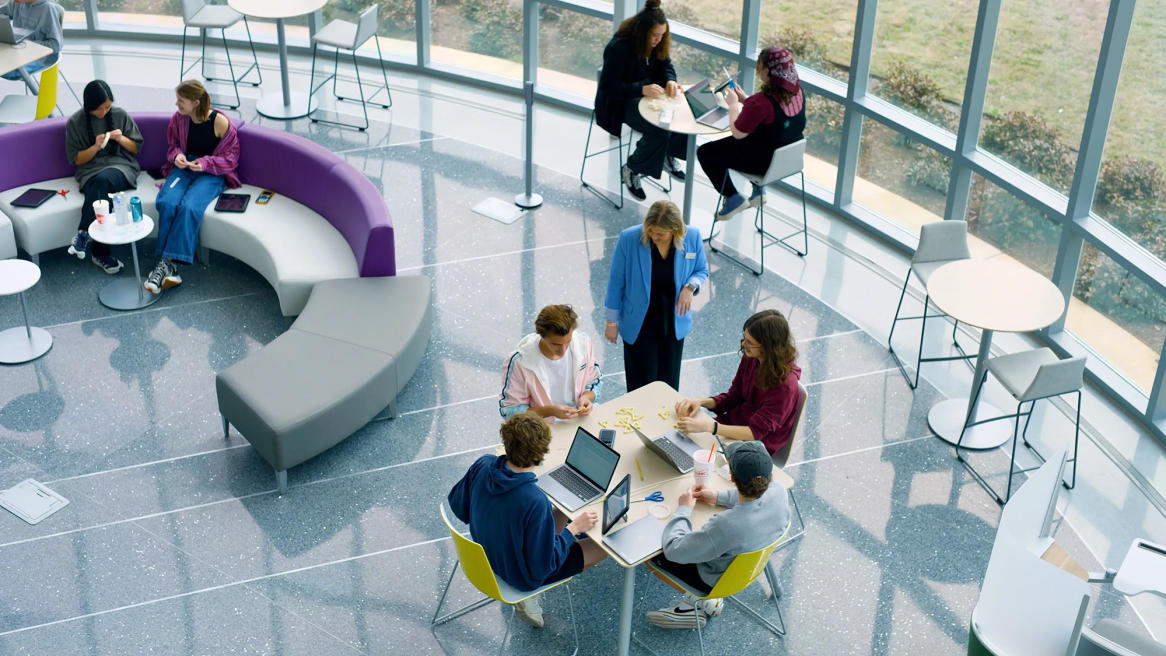Encouraging the Extraordinary: Francis Tuttle’s Danforth Campus
Francis Tuttle’s Danforth Campus offers an innovative space for creativity, hands-on learning and highly engaged students
Pop quiz! Have you ever conducted a homicide investigation in science class? Reconstructed the human anatomy out of clay with a few classmates? Built a robot that you could spin through the halls of your high school?
For the students at Francis Tuttle Technology Center’s Danforth Campus in Edmond, Oklahoma, the answer is yes to all of the above.
Enter the 155,000-square-foot building and you’ll find an innovative academic facility that’s redefining what learning looks like. From computer science to cosmetology, the Danforth Campus offers a range of interactive career training and college prep courses in an open, collaborative environment. “The Danforth Campus was built as a school of the future,” says Director Khaaliq Salim. “We wanted to be interactive and truly hands on.”
PROJECT OVERVIEW
Institution: Francis Tuttle Technology Center – Danforth Campus
Location: Edmond, Oklahoma
Steelcase Dealer Partner: Scott Rice + NexSpaces
Architecture + Design Firm: Bockus Payne
“The great thing about our students is they choose to be here. They don’t have to be here. They said, ‘I want to be an engineer,’ ‘I want to be a doctor,’ ‘I want to be a nurse.’ They are ready to take on that challenge and we’re tasked with helping them get to that next level,” says Salim.
Real world warm up
STEM-loving students can attend one of three college prep academies centered around Engineering, Biosciences and Medicine, and Computer Science. Pop into any academy and you’ll see students shadowing surgeons, performing college-level chemistry labs, building robots, and inventing new products.
“We have students with so many diverse career interests that it makes this melting pot of ideas and different perspectives, which makes collaboration so much easier,” says Jared Keester, Engineering Academy instructor.
Individuals who are passionate about starting their own business or earning a job certification can select from programs in entrepreneurship, pre-nursing, automotive, cosmetology and interactive media. Here, classrooms look more like real-world salons, studios, health clinics and body shops. Don’t be surprised if you see students brushing up on a pitch deck, removing stitches, experimenting with animation, or perfecting a facial while getting business tips from a local salon owner.
“Part of the reason that I joined the Entrepreneurship program was because it teaches me so many valuable lessons, and I feel like it prepares me for any career field,” says student Jaxton Howard. “It sets a solid foundation.”

“Our mission is to prepare our students for success in the workplace. We let students be their own authors of their learning. They get to make choices that best suit them,” Salim says. “Our job is just to set that environment. Make sure the spaces are ready for that.”
According to Salim, this approach helps students make a seamless transition when they go into the workplace. “We see many of our employers saying, ‘Your students understand collaboration. Your students have seen it so much, they’ve experienced it so much, it really wasn’t much of a transition.’ We think that’s because the space was conducive to what they would’ve experienced out in the industry.”
“We’re a community technology center,” says Salim. “They’re creating products back there. They have patents. There are revenue-generating companies on this campus. At the same time, we have all this great instruction going on. So, it’s serving the community in a variety of ways.”
A space to inspire
Filled with natural sunlight, bright pops of color, and a sleek blend of wood, stone, and other natural elements, the Danforth Campus was designed to spark creativity and encourage students to ideate, explore, and problem solve together.
So, how did this one-of-a-kind space come to life? To start, the team at Francis Tuttle shared their design aspirations with Steelcase and dealer partner Scott Rice + NexSpaces, drawing inspiration from Apple, Google, MIT and the Stanford d.school.
“We found a lot of similarities between Francis Tuttle’s innovative vision for their future space and our approach to educational space planning and product development,” says Sarah Day, regional education manager for Steelcase Learning. “This created a lot of opportunities for brainstorming and collaboration. We had many conversations throughout the design process to understand the behaviors they were looking to drive, which helped us iterate on products and solutions,” says Day. “We were kindred spirits, sharing a point of view on space and place.”
You won’t find rigid rows of clunky desks in classrooms at the Danforth Campus. Desks and chairs on wheels allow students to easily change the orientation of the classroom, quickly pushing their desks together for teamwork and idea sharing.
The airy building is filled with flexible furniture that creates open, inviting spaces for group gatherings and solo focus. Large work tables, wheeled whiteboards, and expansive, room-for-everyone couches—including one shaped like a question mark—provide plenty of space for group brainstorms or one-on-one interactions. Pods and quiet enclaves offer spots for when it’s time to pop in a pair of earbuds and tackle individual tasks.
“Some students like the marker board-couch style where one person is talking or multiple people are working on the board. Some students prefer to stay at their desk working independently,” Keester says. “To have that kind of diverse space that caters to different students’ styles of collaboration all in the same room…helps me keep the pulse of where they’re at in terms of their project or assignment.”
Students love the choice and control it allows. “It’s a stress-free environment,” Howard says. “The rooms don’t feel like they’re closing in on you like they do at most public schools. You have the freedom to sit wherever you want, however you want. You can stand up, you can sit down, you can go anywhere. It’s awesome.”
Adds Keester, “Your productivity gets dialed up to 11 when you’re here. It’s like, “I want to be doing, I want to be productive, I want to be learning and teaching.”

Students can easily gather for group projects or to catch up with friends in spaces that adapt to each individual’s learning style.
“For the first time in education, I feel like I am telling the truth to students. We truly are student-centered — we’re inclusive of a variety of personalities or willingness to engage with groups, wanting to be alone, wanting to have a hybrid way of learning,” Salim says. “We can adapt to their way of learning and they come out a better person, a better learner, and a better engineer, auto mechanic, cosmetologist, etc.”
Howard agrees. “It’s a place for students who have big goals for their life to come together and be surrounded by people that have the same goals. It’s great.”
Steelcase Learning has been partnering with K-12 schools and higher education institutions to understand how teaching and learning is evolving—and how smarter, more active environments can help.
Want to explore more about our latest active learning outcomes report, sign up for a virtual tour or read more of our latest research?



